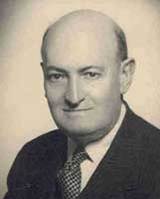Hugo Wast facts for kids
Gustavo Adolfo Martínez Zuviría (October 23, 1883 – March 28, 1962) was a well-known Argentine writer and scriptwriter. Most people knew him by his pen name, Hugo Wast.
About His Life
Gustavo Martínez Zuviría was born in Córdoba, Argentina. His family later moved to Santa Fe. He studied law at the University of Santa Fe and finished his degree in 1907.
He first used the name "Hugo Wast" for his novel Flor de Durazno (Peach Blossom) in 1911. This book became his first big success. In 1916, he was elected to the Argentine Chamber of Deputies. This meant he became a representative in the Argentine government. He also won the National Literary Prize for his realistic novel, Desierto de piedra (Stone Desert).
Hugo Wast was known for some strong and sometimes controversial ideas, which he expressed in books like Oro (Gold). He also believed in a traditional Catholic view of society and government.
In 1931, he became the director of the National Library of Argentina. Later, in 1943, he served as the Minister of Public Instruction for the new military government. In this role, he brought back religious education in public schools. This was a big change, as public schools in Argentina had been secular (non-religious) for about sixty years.
In 1955, Hugo Wast was removed from his position as National Library Director. This happened because of disagreements between the government, led by President Juan Perón, and the Catholic Church. He passed away in Buenos Aires in 1962.
His Books
Hugo Wast wrote many books during his life. Here are some of them:
- (1905). Alegre.
- (1907). Novia de Vacaciones.
- (1911). Flor de Durazno.
- (1914). Fuente Sellada.
- (1916). La Casa de los Cuervos.
- (1918). Valle Negro.
- (1919). Ciudad Turbulenta, Ciudad Alegre.
- (1920). La Corbata Celeste.
- (1921). Los Ojos Vendados.
- (1922). El Vengador.
- (1923). La que no Perdonó.
- (1924). Pata de Zorra.
- (1924). Una Estrella en la Ventana.
- (1925). Desierto de Piedra.
- (1926). Las Espigas de Ruth.
- (1926). El Jinete de Fuego.
- (1926). Myriam La Conspiradora.
- (1927). Tierra de Jaguares.
- (1927). Sangre en el Umbral.
- (1929). Lucía Miranda.
- (1930). 15 Dias Sacristán.
- (1930). El Camino de las Llamas.
- (1931). Vocacion de Escritor.
- (1931). Don Bosco y su Tiempo.
- (1935). El Kahal.
- (1935). Oro.
- (1935). Buenos Aires, Futura Babilonia.
- (1936). Naves, Oro, Sueños.
- (1941). El Sexto Sello.
- (1942). Juana Tabor.
- (1942). 666.
- (1944). Esperar Contra Toda Esperanza.
- (1945). Lo que Dios ha Unido.
- (1948). Alma Romana.
- (1948). Su Segunda Patria.
- (1952). Morir con las Botas Puestas.
- (1955). Estrella de la Tarde.
- (1960). Año X.
- (1963). Autobiografía del Hijito que no Nació.
- (1964). Navega Hacia Alta Mar.
Collected books
- (1942). Todas las Novelas de Hugo Wast.
- (1956-57). Obras Completas de Hugo Wast (2 vols.)
Books translated into English
- (1924). The House Of The Ravens.
- (1928). Black Valley.
- (1928). Stone Desert.
- (1929). Peach Blossom.
- (1930). The Strength of Lovers.
See also
 In Spanish: Hugo Wast para niños
In Spanish: Hugo Wast para niños


